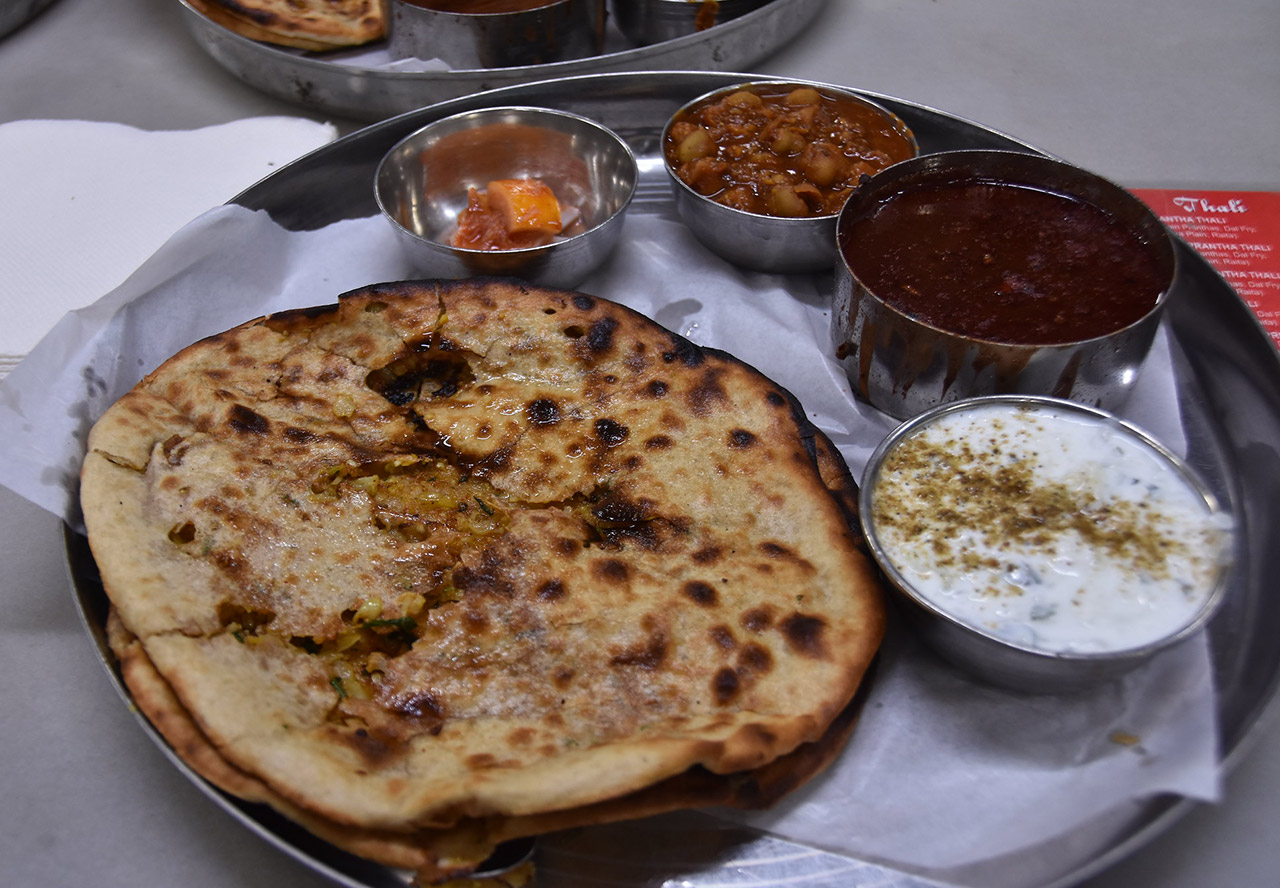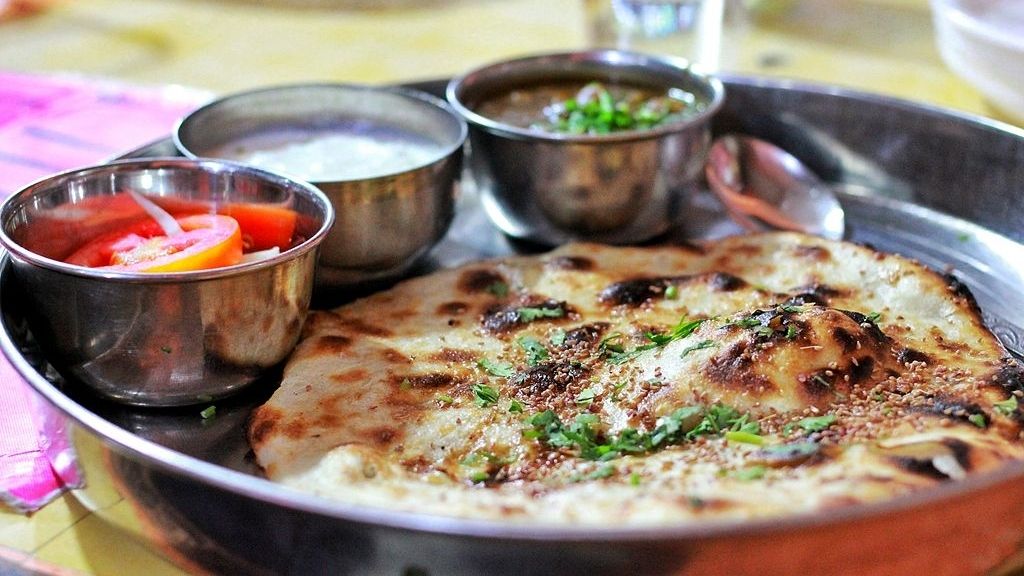
Punjabi cuisine is heavily influenced by the ancient Indus Valley Civilization’s agriculture and farming lifestyle. The soil of the Indian Punjab, known as the ‘Granary of India’ or ‘India’s Bread-basket,’ is suitable for growing wheat. Rice and wheat are the two major crops grown by Punjabi farmers, and they are the key crops grown during the Kharif and Rabi seasons, respectively. Since time immemorial, the indigenous Punjab Basmati rice has been the pride of the province. Cattle are the primary source of dairy products in the region, ranging from ghee, butter, clarified butter, curd, paneer (cottage cheese), and a variety of delicious delicacies. As a result, staple goods farmed locally, such as dairy products, are an important element of the local diet. Let’s take a look at some of the traditional food of Punjab that express the true spirit of Punjabi culture.
Cooking Techniques and Tandoor

The people still use some of the old cooking facilities, like the Punjabi bhathi, which is akin to a masonry oven, in order to practise various traditional cooking styles. The Punjabi bhathi is made of bricks or mud and clay, and the top is covered with metal. Traditional Punjabi stoves and ovens are called Chulla and Bharolli, respectively, alternately band chulla and wadda chulla ovens are popular in Punjabi houses.
A traditional clay oven is frequently seen in the courtyards of Punjabi families, the Punjabi tandoor is a vital part of preparing numerous Punjabi food dishes. In the rural areas of Punjab, there is also a custom of holding community tandoors. Kath tandoors are the name given to these tandoors. A Punjabi tandoor is a bell-shaped oven that is either raised above or buried in the ground. The oven’s fire is made up of wood and charcoal. After the partition of India in 1947, which saw. The tandoor is used to make a variety of bread such as roti and naan, as well as delectable meat meals such as tandoori chicken, which is made by roasting chicken with spices and yoghourt.
Let’s have a look at 10 traditional Punjabi food that are commonly consumed for breakfast, main courses, snacks, and desserts.
Lassi

Punjabis are proud of their lassi, a drink that is well-known throughout the world. Despite its saltiness, the original lassi is sweet and served with a dab of milk and butter to make it as rich as possible. These days, flavours such as mango rose or strawberry are added to give it a twist while battling the summer heat. Almost all restaurants, even those that aren’t Punjabi, serve it, demonstrating the drink’s widespread popularity.
Sarso Ka Saag Makki di Roti

Sarso ka Saag and Makki di Roti are a match made in heaven, and are a staple in Punjabi households, especially during the winter months. Because mustard leaves are a little bitter, spinach can be added to make it healthier and tastier, and a dollop of the famed desi-ghee can be added for good measure as a wintery guilty pleasure! It’s a filling dinner that’s usually served with jaggery. During the winter, this feeds the body with all of the critical nutrients it requires.
Paratha

You’ve probably had a parantha at least once in your life, no matter where you are. This bread, whether plain or packed, is a regular in most Punjabi households. A paratha is almost always the most popular food to eat at a Dhaba, even when travelling. Punjabis enjoy theirs fried in desi ghee. It’s a humble marriage made in gourmet heaven when served with cold curd and pickle. Stuffings come in an unlimited variety of flavours. From potatoes, onions, cottage cheese to keema, anything else you can think of! The popularity of the dish is evidenced by the fact that the national capital has a ‘paranthe wali gali’ dedicated to serving up all possible versions.
Kadhi Pakora

The Punjabi kadhi affirms the richness of Punjab’s everyday food and people. In some aspects, the Punjabi kadhi differs from its Gujarati version. It has besan pakoras and is hot and sour, whereas the Gujarati version is sweeter, lighter in texture and white in colour. Pakoras are typically comprised of besan and onions.
Rajma Chawal

It’s a must-have in every north Indian household, as well as a source of nostalgia for many. It feels odd to eat rajma or chawal with anything other than each other, like breaking up your favourite couple. Despite the fact that it originates in Kashmir, it is a favourite among all Punjabis and their grandmothers. To add to the flavour, this Punjabi meal is usually served with a side of pickled onions. Some people add a pinch of crushed papad to their rajma chawal to give it a little extra crunch.
Chole-Kulcha

Whether it’s Amritsari chole or Peshawari chole, they’re both excellent; the only difference is the origin. This chickpea dish is best served with paratha or naan and is a mainstay in Punjabi cuisine. You can also just eat spoonfuls of it plain, given how delicious it is. The only difference is that Peshwari is a little drier, whereas Amritsar has a bit of gravy. Kulcha is a wheat-based flatbread that is typically eaten with chole. The bread is prepared in a tandoor or on a griddle, then brushed with ghee and served while still warm. It’s chewy and soft, and it’s easy to make on a traditional Tawa, making it accessible to both commoners and royalty, which is why it’s so popular in North India.
Missi Roti

Missi roti is a Punjabi dish that is also popular in many other northern Indian states. This flatbread is frequently prepared at home. Chickpea flour or besan, when combined with onions, gives an incredible flavour to this cuisine. Missi Rotis are very common in Punjabi eateries. In restaurants, it’s frequently served with butter. To make flavoured missi roti onions. and methi or fenugreek leaves are added to the dish. Grated carrots, grated beets, and cabbage are among other ingredients that can be used to make missi roti. These flatbreads can be made plain as well. Missi roti is served with any type of dal.
Tandoori Chicken

Tandoori Chicken is a delectable dish made up of medium-sized chunks of chicken marinated in yoghurt and seasoned with tandoori masala and other seasonings. The chicken is skewered and grilled in a tandoor oven. The city of Amritsar offers some of the best Tandoori Chicken restaurants.
Amritsari Machhi

The dish is also known as Amritsari Machhi and is a popular appetiser in Amritsar. It’s created using gramme flour batter and accompanied with a delectable mint and coriander chutney. Carom seeds (ajwain), gramme flour (besan), and the usage of whole fish are the secret components that distinguish this dish.
Pinni

Pinni is a Punjabi dish that is typically served during the winter months. It’s cooked with desi ghee, wheat flour, jaggery, and almonds and served as a treat. Raisins can be used as well. Urad dal pinni is a pinni variation. Pinni is also a generic term for pastries or sweets that are shaped like a circle. Use khoya in the pinnis for extra taste. Pinnis do not need to be cooled and do not go bad for a long period. Pinnis are topped with crushed cardamom and served hot with tea or warm dairy.
Punjabi cuisine has a distinct flavour profile that is both strong and flavorful. Because of the rich blend of spices and diverse ingredients, it has very popular in India as well as abroad. Punjabi cuisine is the ultimate comfort food, making it one of India’s best cuisines.





